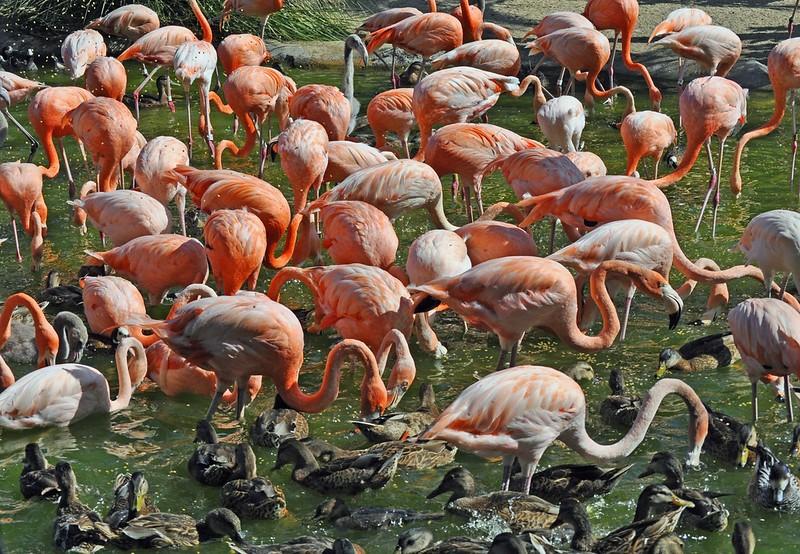At a media briefing yesterday, the head of the World Health Organization (WHO) said recent H5N1 avian flu spillovers in mammal species should be monitored closely and that countries should prepare for any changes that would make the virus more of a threat to people.
In other developments, Cuba reported its first highly pathogenic H5N1 outbreak, which struck wild birds at a zoo in Havana.
WHO urges preparedness, close monitoring
At a WHO briefing yesterday, which covered multiple global health issues, Director-General Tedros Adhanom Ghebreyesus, PhD, said H5N1 has spread widely in wild birds and poultry over the past 25 years, but the recent spillovers—including to sea lions in Peru and various mammals in the Americas and Europe—require close monitoring.
He said the WHO assesses the current risk to people as low, and since 1996, human infections have been rare, with no sustained transmission. An outbreak in farmed minks and mass deaths of Peruvian sea lions, however, suggest that the virus, known to have properties that make it more recognized by mammalian airway cells, may be already circulating among mammals.
At yesterday's briefing, Sylvie Briand, MD, PhD, MPH, who directs the WHO's pandemic and epidemic diseases department, said human H5N1 cases are rare and typically involve people who had direct exposure to sick birds. She urged people not to handle sick or dead animals and for countries to contain the spread of the virus in animals and to identify where the virus is in wild and domestic birds.
So far, seven human infections have been reported, some mild but some severe or fatal. The most recent case involves a 9-year-old girl from Ecuador who was hospitalized in January with a severe infection. Mike Ryan, MD, who leads the WHO's health emergencies program, said the patient's condition is improving.
He said a lot of work is going on behind the scenes to manage risks at the animal-human interface, but he said technological solutions aren't the only answer. Ryan said it's crucial that communities take frontline roles in risk-reduction and that governments invest in community resilience.
Making vaccines, antivirals available
Tedros said the WHO is working with partners to study infections in humans and that the WHO lab network is monitoring circulating strains and providing advice to countries. He also said the WHO continues to engage with manufacturers to make sure vaccines and antivirals are available, if needed.
As part of its work, the WHO's flu vaccine strain selection committee, which meets twice a year to recommend strains to include in seasonal flu vaccines, regularly assesses avian flu strains that have zoonotic potential and recommends that labs prepare new candidate vaccine strains as needed. The group meets later this month to recommend the strains for the Northern Hemisphere's 2023-24 flu season.
Last March, the US Centers for Disease Control and Prevention (CDC) said the H5N1 virus circulating in poultry poses a low risk to people, but an H5 candidate vaccine virus that it recently produced is nearly identical to the hemagglutinin of the H5N1 viruses in birds. The CDC said that it could be used to produce a vaccine in people, if needed.
It added that the virus are currently susceptible to seasonal flu antivirals and can be detected by diagnostic tests for seasonal flu viruses.
Cuba reports first H5N1 detection
Cuba has detected highly pathogenic H5N1 for the first time, which occurred in wild birds at a zoo in Havana, according to a notification today from the World Organization for Animal Health (WOAH).
The outbreak began on Feb 2, killing 4 of 570 susceptible birds. One bird found sick was culled. Tests at Cuba's National Center for Animal and Plant Health confirmed the findings on Feb 6.
A Cuban media report posted on the agriculture ministry's website said the virus hit wild birds that inhabit the Havana Zoological Garden and that outbreak response steps include quarantine and temporary closure of the facility.
H5N1 outbreaks in the Americas began in the United States and Canada about a year ago but have spread to several countries in South and Central America over the past few months. Some of those nations had never reported a highly pathogenic avian flu outbreak in birds before.
More positive tests in US poultry, wild birds
In US developments, the US Department of Agriculture (USDA) Animal and Plant Health Inspection Service (APHIS) reported more outbreaks in three states over the past few days: Kansas, Mississippi, and Pennsylvania. Outbreaks in two of the states involved commercial farms.
In Kansas, the virus struck a game bird producer in Mitchell County that houses 17,000 birds. Mississippi's outbreak occurred at a broiler farm in Leake County that has 90,000 birds.
Also, APHIS reported 50 more H5N1 detections in wild birds, bringing the total to 6,161. The virus was found mainly in waterfowl and birds of prey from a wide geographic range. Two involved submissions of birds found dead by private parties, including a captive bald eagle in Hampden County, Massachusetts, and a crow in Minnesota's Hennepin County, home to Minneapolis.



















